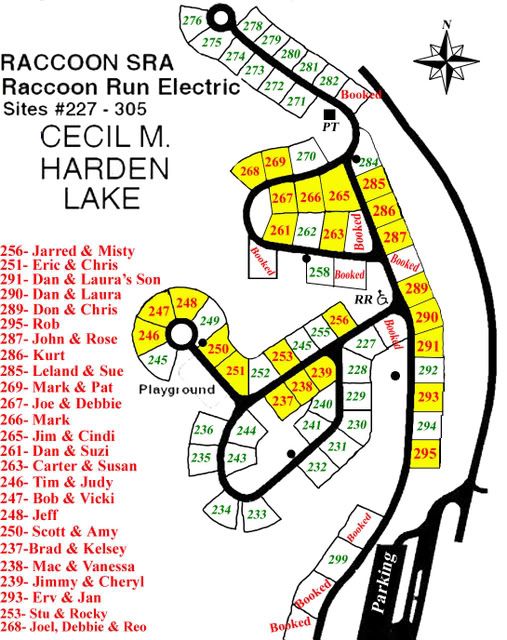Factoid: The fall forest colors are vivid in October when Parke County holds its nine-day Covered Bridge Festival. Cecil M. Harden Lake, formerly known as Mansfield Lake, is located in west central Indiana and is situated on Big Racoon Creek, just 33 miles upstream of the confluence with the Wabash River. The lake was completed by the Corps of Engineers in 1960.
Area History and Features
The lake was renamed from Mansfield Lake by a bill signed into Law on Dec. 14, 1974, by President Gerald R. Ford, in recognition of Mrs. Cecil Murray Harden for her role in obtaining funds for the project. Mrs. Harden has long been recognized as one of the most active members of the community, serving in positions on the local, state, and national levels. Mrs. Harden was the U.S. Congressional Representative for five terms beginning in 1949.
Cecil M. Harden Lake is located on Big Raccoon Creek in the rolling farmland in Parke County. Named for Benjamin Parke, the first judge of the U.S. District Court in Indiana, Parke County was officially organized on Jan. 9, 1821. As with most of southern Indiana, Parke County was inhabited by several Native American tribes, primarily the Delaware, Shawnee, and Miami. The Native Americans lost the area following the signing of the “10 O’Clock Treaty” in 1809 and the Treaty of St. Mary’s in 1818. By 1840, the settlement of Parke County was complete.
The Native Americans gave the name of “Pun-go-so-co-nee” to the largest stream in Parke County, meaning “Stream of Many Sugar Trees.” Early settlers translated that as Sugar Creek and followed the Native Americans in collecting sugar water from the trees each spring. They boiled the water down to syrup or granulated sugar for use as a sweetener during the rest of the year. Today, several active sugar camps still operate in the hard maple groves along Sugar Creek. Equipment has been modernized, but the technique and spirit is the same as that of the pioneers more than 150 years ago.
Parke County is very similar to much of southern Indiana with its rich rolling farmland, mineral reserves, coal, natural gas, and valuable forests of oak, walnut, maple, and hickory. However, residents treasure a unique link to the past as the “Covered Bridge Capital of America.” A total of 35 covered bridges dot the countryside of Parke County, more than any other county in the United States. Because of their regional popularity, two master covered bridges builders, J.J. Daniels and J.A. Brittin, lived in Rockville, the county seat of Parke County. The remaining 35 bridges were built between 1865 and 1921. The two oldest bridges are still carrying traffic.
More useless information.

This means absolutely nothing. but it is a "Factoid" about the lake.
 Raccoon Lake
Raccoon Lake

 ???
???
 Rob
Rob





 this year at Raccoon lake and who know's what at Chain of Lakes.
this year at Raccoon lake and who know's what at Chain of Lakes.

